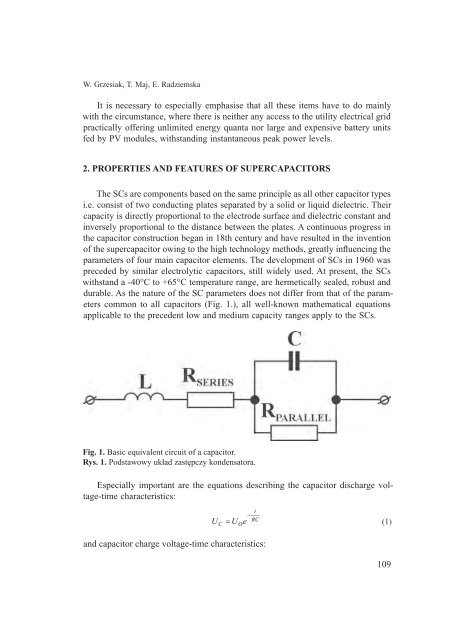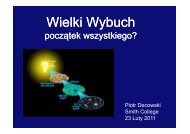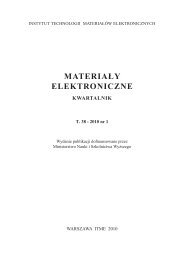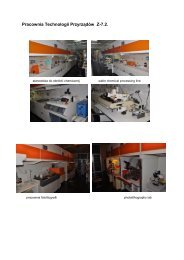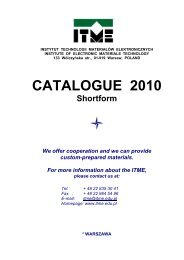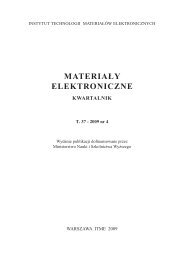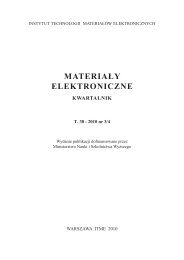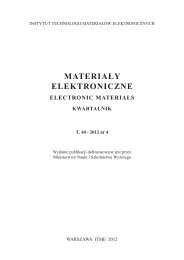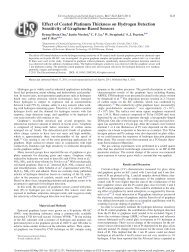Nr 1 - ITME
Nr 1 - ITME
Nr 1 - ITME
You also want an ePaper? Increase the reach of your titles
YUMPU automatically turns print PDFs into web optimized ePapers that Google loves.
W. Grzesiak, T. Maj, E. Radziemska<br />
It is necessary to especially emphasise that all these items have to do mainly<br />
with the circumstance, where there is neither any access to the utility electrical grid<br />
practically offering unlimited energy quanta nor large and expensive battery units<br />
fed by PV modules, withstanding instantaneous peak power levels.<br />
2. PROPERTIES AND FEATURES OF SUPERCAPACITORS<br />
The SCs are components based on the same principle as all other capacitor types<br />
i.e. consist of two conducting plates separated by a solid or liquid dielectric. Their<br />
capacity is directly proportional to the electrode surface and dielectric constant and<br />
inversely proportional to the distance between the plates. A continuous progress in<br />
the capacitor construction began in 18th century and have resulted in the invention<br />
of the supercapacitor owing to the high technology methods, greatly influencing the<br />
parameters of four main capacitor elements. The development of SCs in 1960 was<br />
preceded by similar electrolytic capacitors, still widely used. At present, the SCs<br />
withstand a -40°C to +65°C temperature range, are hermetically sealed, robust and<br />
durable. As the nature of the SC parameters does not differ from that of the parameters<br />
common to all capacitors (Fig. 1.), all well-known mathematical equations<br />
applicable to the precedent low and medium capacity ranges apply to the SCs.<br />
Fig. 1. Basic equivalent circuit of a capacitor.<br />
Rys. 1. Podstawowy układ zastępczy kondensatora.<br />
Especially important are the equations describing the capacitor discharge voltage-time<br />
characteristics:<br />
U<br />
C<br />
= U<br />
O<br />
e<br />
−<br />
t<br />
RC<br />
(1)<br />
and capacitor charge voltage-time characteristics:<br />
109


